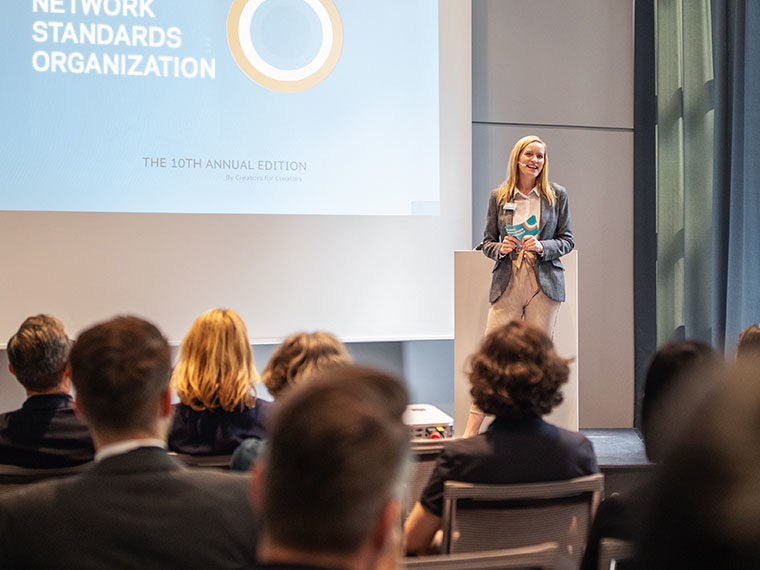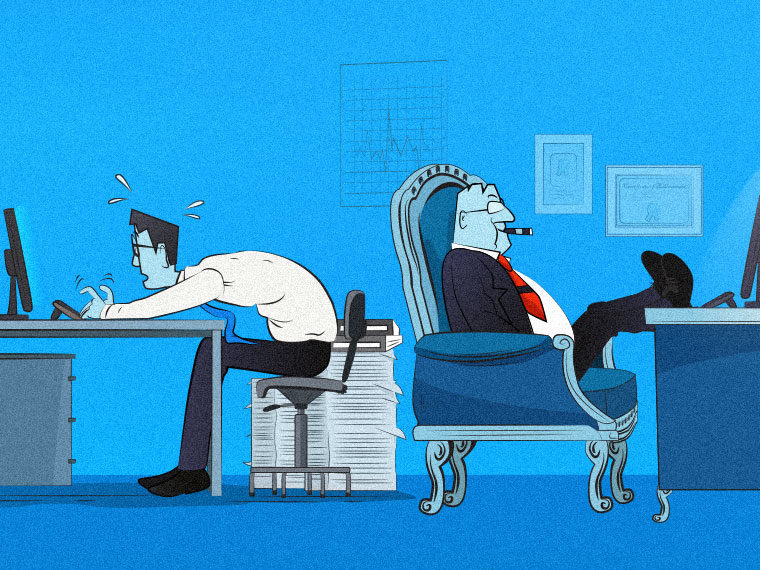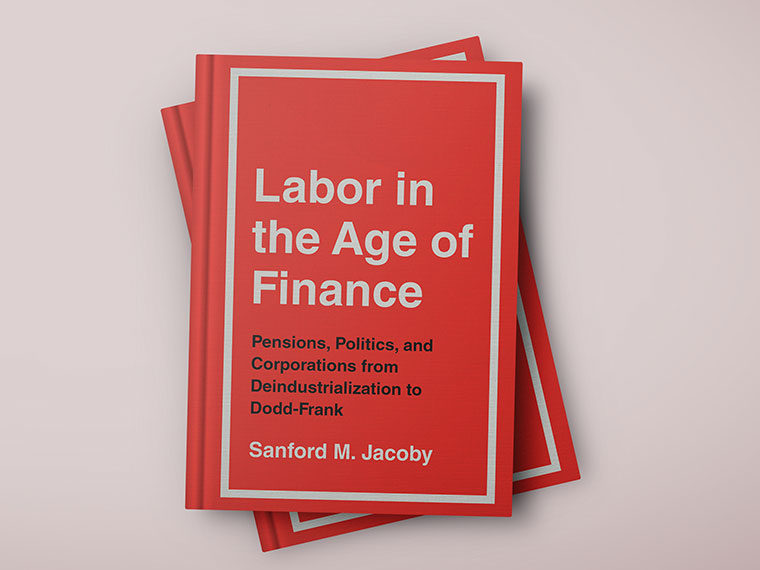Nurses, cosmetologists and other professionals find wages suppressed more than many lower-skilled workers
The balance of power between workers and employers has shifted a bit lately, as scattered labor shortages force some businesses to fork out bigger paychecks to attract and retain staff. But don’t mistake this for a workers’ heyday.
In places where employers operate without much competition — a rural town where a single hospital, factory or prison provides most of the jobs, for example — workers are unlikely to ever reap the wage gains their peers earn elsewhere. Employers in concentrated labor markets across large swaths of the U.S. consistently pay lower wages than workers’ productivity would justify, even when labor is in short supply and pay is rising nationally, according to a consensus of research.
Opt In to the Review Monthly Email Update.
A working paper offers evidence that the lack of competition for labor, known as monopsony, is a direct contributor to the low wages seen in concentrated markets, not just a correlating factor. The research shows employers setting wages lower for workers when there is little or no nearby competition for their skills, yet paying higher rates for jobs requiring skills that readily transfer to other businesses.
Many employees trapped by monopsony power work in health care, according to the findings by UCLA Anderson’s Gregor Schubert, MIT’s Anna Stansbury and Burning Glass Technologies’ Bledi Taska. The most affected jobs require time and money spent on special education or licensing that would be wasted in a move to another industry.
Nurses, dental hygienists, cosmetologists, phlebotomists and college professors in concentrated labor markets, for example, may work for thousands of dollars a year less in some locations than what the national averages for their fields and regional wage norms would suggest, according to the findings. These workers can’t easily ply their trades outside of clinics, salons and schools, which makes switching occupations for better pay difficult, if not impossible.
On the other hand, food servers, retail clerks and bank tellers working for employers that lack local competition in those particular occupations typically collect paychecks on par with peers in the same job in comparable cities, according to the findings.
The job markets for these workers “are broader than their current job and current occupation,” Schubert points out in an interview. The hospital gift shop clerk can take a job at a grocery store or clothes shop. The billing clerk can work at similar jobs in many companies, and the hospital cafeteria attendants don’t have to stick to health care to find employment. These options make them less likely than nurses and physical therapists to put up with lower than typical wages, according to the findings.
Despite these limits to monopsony power, the researchers estimate that some 12% of the U.S. private sector workforce collects noticeably lower pay because their employers lack competition for their labor. The study lists 25 occupations in which at least 50,000 workers can be expected to have their wages dinged by more than 2% as a result of being in this kind of situation.
The study helps tease out the effects of monopsony from a multitude of other issues that can impact wages, such as local economic conditions. It also calls into question the way in which employer concentration is traditionally measured and addressed, by both antitrust investigators and academic researchers.
A Common Flaw in the Research?
A U.S. Treasury Department report released in February 2022 gathers hundreds of studies and testimonies on monopsony, which alongside calls for a higher minimum wage and gig worker rights, has become a popular policy topic. The report concludes that lack of competition in the labor market lowers wages by about 20%. It recommends using antitrust laws, among other measures, to bring up wages in concentrated labor markets.
Schubert, Stansbury and Taska point to a persistent problem with monopsony research that may skew findings: Popular study designs rarely capture the way job markets work in real life.
Traditionally, researchers define a labor market as a single occupation or industry within a given local area, Schubert explains. A bottle manufacturer in Topeka, Kansas, is treated as a concentrated labor market if there’s only one bottlemaker there. The lone Starbucks in town represents monopsony if it’s the only establishment in town where workers serve food and drinks from behind a counter. The setup essentially assumes that a worker is limited to his employer’s wage rate if there is no nearby employer offering the same exact job.
But people move between occupations all the time, Schubert notes. About 23% of the workers switching jobs in the resumes his team reviewed were also switching occupations at the same time.
“Someone who works as a barista at Starbucks is not just thinking about the coffee shop market for their next job,” he explains. “They are thinking about broader retail and services jobs.” Even if the coffee shop has no competition for lattes — a monopoly on its product — other local employers may compete for the barista’s customer service and multitasking skills.
To figure out which workers are most likely to get stuck with subpar wages, the researchers combed through anonymized resumes collected by Burning Glass Technologies, an online jobs site.
The researchers tracked some 16 million careers over 17 years to build a new dataset showing the likelihood a worker in a particular occupation will move to a job in another occupation. Wages for occupations with higher “occupational mobility,” the researchers reasoned, could not easily be controlled by a small number of employers. They then looked at how pay changed for different occupations when employers’ competition within the occupation shrank or disappeared.
Schubert, Stansbury and Taska came to many of the same broad conclusions shown in other recent studies. Employer concentration, they found, significantly depresses wages over significant parts of the country, not just in company towns. Of the 117 million workers represented in their wage data, nearly 14 million are predicted to be in monopsony situations that reduce their wages by more than 2%.
But the differences in pay suppression between occupations can be stark. Registered nurses, for example, would earn about $3,000 to $6,000 less per year when they work in highly concentrated markets, rather than in a market with median concentration, according to the study. Cafeteria workers tend to collect similar (poor) wages whether their employers have competitors in the same occupation or not, because their wages are set by a broader labor market that includes other low-paid local jobs that they might move into.
A Popular Solution That Misses the Mark
This new finding — that employer concentration matters a lot to some paychecks, but not at all to others — suggests that some popular anti-monopsony efforts will overregulate some labor markets while missing bigger problems, the researchers contend.
Antitrust laws, often suggested as tools to prevent employers from getting undue wage control, treat the one bank in town as having equal wage-setting power over its employees as the one hospital has over its own. The work by Schubert, Stansbury and Taska suggests that a change in hospital concentration — perhaps as the result of a merger — represents the bigger threat to paychecks; when the competition between employers in its workers’ occupations decreases as a result, the hospital can skimp much more on wages without losing workers.
If job mobility is important to pay, as the study suggests, making it easier for workers to move for higher pay would help prevent abuses of wage-setting power, Schubert says. Effective strategies for this, according to some studies, include easing regulations about carrying professional licenses across state lines, banning noncompete and nonpoaching agreements, reducing housing costs in high-wage cities and improving local-level job search assistance.
The authors suggest that policies should focus on protecting workers in occupations most vulnerable to monopsony power. They note several other measures that might further the cause, including collective bargaining to set national minimum wages for certain occupations. Their study suggests that not every worker in a limited occupational labor market needs the help.
Featured Faculty
-
Gregor Schubert
Assistant Professor of Finance
About the Research
Schubert, G., Stansbury, A. and Taska, B. (2022). Employer Concentration and Outside Options.
Johnson, Janna E., and Kleiner, Morris M. (2020). Is Occupational Licensing a Barrier to Interstate Migration? American Economic Journal: Economic Policy, 12 (3): 347-73.
Ganong P, Shoag D. (2017). Why Has Regional Income Convergence in the U.S. Declined?. Journal of Urban Economics, 102 :76-90.






